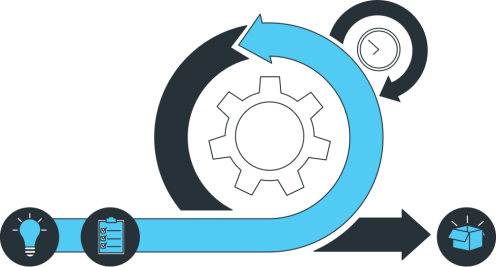The goal of any company is to achieve its sales objectives and improve its revenue. To this end, they need to acquire new customers regularly, which in itself requires specific processes supported by suitable marketing actions. One of these processes is known as “lead generation”, a strategy which consists in attracting contacts who are likely to be interested in the products or services the company has to offer. Yet there remains a certain amount of mystery and apprehension surrounding lead generation marketing, its meaning, and its advantages. Let’s start by taking a look at the notion of “lead”, which will help us define “lead generation”. Then, we will analyze the benefits of such a strategy. And, to finish, we will list the prerequisites that should be implemented if you want to generate leads successfully.
Understanding Lead Generation
As HubSpot pointed out in its State of Marketing Trends Report (2022), 61% of marketers prioritize traffic and lead generation above all else.
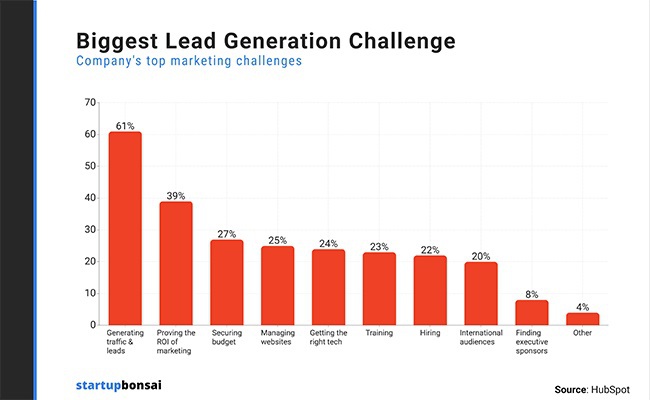
This shows that the notion of lead generation plays a crucial role in the marketing strategies companies set up. But what are we talking about, exactly? What is a lead? And what does it take to implement a lead generation strategy?
WHAT IS A LEAD?
In marketing terms, a lead refers to a commercial contact. In other words, someone who shows interest in a company’s products or services, in whatever way that may be.
How do you know whether someone is interested? There are several ways to assess their level of interest. For example, a contact may have visited a product page multiple times, filled out a form to ask for information or to download content, answered a survey for a brand, spoken with a salesperson on the phone, requested a demo, etc. With that said, generally speaking, a contact becomes a lead the moment they provide personal data (such as their name, phone number, or email address), or as soon as they reach out to the company on their own.
This gives us a clearer definition. A lead is a contact who has shown interest in the company without having been (personally) sought out by the company itself. That’s why the notion of lead is often associated with “inbound” marketing strategies, which consist in letting contacts come to you instead of reaching out to them. That is a crucial component of Lead Generation Marketing.
From that, we can categorize leads based on the interest (or lack of interest) they show in products or services. In other words, their level of qualification. A marketing lead can fall under any of the following categories:
- Information qualified leads are in a phase of research. They haven’t clearly expressed their interest yet.
- Marketing qualified leads show obvious interest in the offer.
- Unqualified leads show no interest at all – which means there’s no point reaching out to them.
Of course, each type of lead warrants a specific marketing strategy.
Warning: you need to distinguish between a lead and a prospect, even though these two terms are often used interchangeably. The “lead stage” comes right before the “prospect stage”. People go from contact to lead, and from lead to prospect, and then convert to become customers. While a lead shows interest, a prospect, on the other hand, manifests an intention. They are already in touch with a salesperson and purchase is their next step. The image below will help you visualize the process.
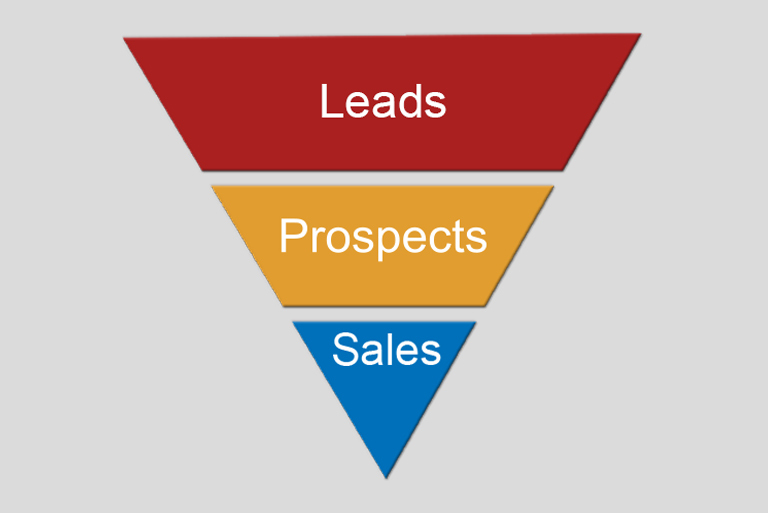
WHAT DOES LEAD GENERATION ENTAIL?
Now that we know what a lead is, let’s look into lead generation, or “lead gen”.
The expression refers to a process that aims to attract interested contacts in order to convert them into customers. For example, when considering lead generation for a website, the objective will be to attract qualified visitors, who are likely to turn into prospects.
Promoting this attractiveness involves a number of methods (which we will look into later) that all share the same goal. They all mean to spark interest in your company, to direct contacts to the most relevant offers, and to foster a positive opinion so that the people being targeted want to get in touch with your sales team (or agree to be contacted).

All in all, lead generation is a way to select the right contacts – those who are likely to become customers – and to set them on the right path – the path to purchase. This is done by utilizing natural methods rather than intrusive ones. Which is why the “inbound” approach is favoured over “outbound” marketing and its sales outreach, cold calling, door-to-door, and untimely advertising.
It’s worth noting that these techniques are no longer the bee’s knees – 97% of people ignore cold calls altogether, according to Business Wire! – and that nowadays’ consumers want to actively take part in their own purchasing process. That is why outbound practices – unlike inbound approaches – tend to generate few qualified leads (at least that’s what 80% of marketers believe – source).
Lead generation strategies address this very change in consumer behaviour by implementing acquisition levers that are better suited to their expectations.
What Is Lead Generation Used For?
Selling products or services – especially when it comes to B2B, where customer journeys are typically longer than with B2C – is a time-consuming process. A contact often needs to be monitored for weeks, if not months.
Let’s take a company CRM software as an example. The team in charge of this purchase will start by looking into the CRM tool market. It will then identify suppliers, compare their offers, come up with a short list of the best candidates, set up demos, and, finally, at the very end of this process, make a decision. Note that in some areas of B2C, such as real estate, the path to purchase can also be very long. That’s when implementing a lead generation strategy can be especially relevant.
TARGETING THE RIGHT PEOPLE TO CONVERT
One of the main goals of lead generation marketing is to target your audiences carefully and to catch the attention of those people who are likely to make it all the way down the conversion journey. This is all the more important in fields where acquisition costs are high. Focusing on the right people then allows you to maximize your return on investment.

In that regard, lead generation is a crucial step in the customer acquisition journey. That’s where the stakes are highest. Will you target the right audiences? Attract contacts who are genuinely interested in what you have to offer to your lead generation website? Drive prospects who will actually complete a purchase down your conversion funnel?
Why? Because it’s easier to convert a marketing qualified lead, that is to say a contact who is obviously interested, into a customer. Far from focusing on attracting contacts alone, the lead generation process encompasses all the efforts that will allow you to sort and then qualify visitors, so you can then convert them into prospects. It also allows you to personalize your outreach strategy based on the data you have acquired, so you can meet your leads’ actual needs.
Focusing on this approach yields higher profitability compared to traditional acquisition methods. By working with 100 promising leads that will turn into 30 customers rather than with 1,000 unqualified contacts that will get you the same results, you can save a lot in acquisition costs. The fact that these processes are often automated (thanks to lead generation tools) reinforces their efficiency, saving marketers and sales representatives more time that they can use to concentrate on tasks with a higher added value.
In addition, lead generation can help increase revenue. Marketo found that companies with a strong lead generation process see their revenue exceed their expectations by 133%.
OTHER BENEFITS OF LEAD GENERATION
That’s not all, as lead generation strategies come with perks that companies will find incidentally beneficial. A consistent lead generation process allows you to…
- Develop your company’s reputation since it involves highlighting your products or services. The actions put in place to generate leads, such as creating expert content, can improve your brand image and establish you as an industry leader.
- Collect data on your potential customers: their needs, expectations, constraints… Information that can significantly improve your understanding of your target audiences and let you implement suitable and customized marketing actions.
- Gain a competitive advantage by making a statement within your market through less intrusive acquisition levers and methods more in line with customers’ expectations.
- Promote customer loyalty. Sales professionals understand the benefits of having customers who are likely to make purchases again, to publish positive feedback about a company, and to become ambassadors for a brand.
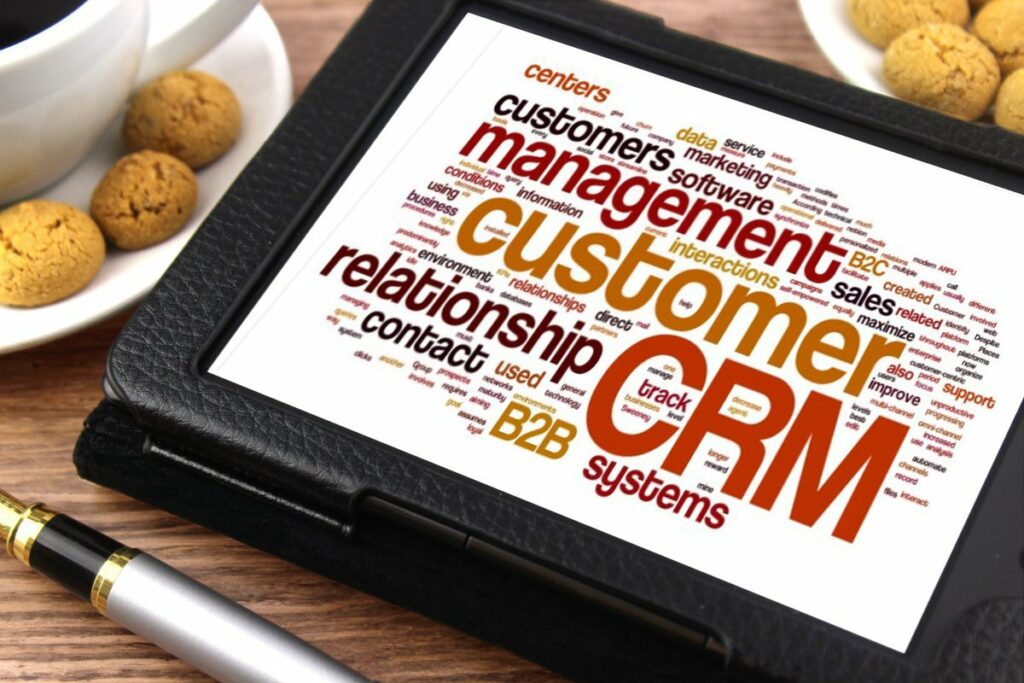
What Are the Prerequisites for Implementing a Lead Generation Strategy?
It’s understood that lead generation is not a mere customer acquisition method. It’s a well-rounded approach that involves implementing a sound strategy designed to attract and convert. Here are the prerequisites that make it possible.
- Knowing and understanding your audience. To generate leads effectively, you first need to identify the people who are likely to be interested in your products or services and to make it to the end of the customer journey. This implies that you must know what makes your audience tick and consider its needs, its buying habits, and the information channels it favours.
- Selecting the right acquisition levers, the ones that contribute to attracting the desired audience and converting contacts into leads. It can be content marketing (articles published on your blog), an active social media presence, using promotional emails, SEO, digital advertising, etc. The idea is to be present online when your future customers begin their research phase. It’s all about focusing on the most relevant channels, where your potential contacts can be found.
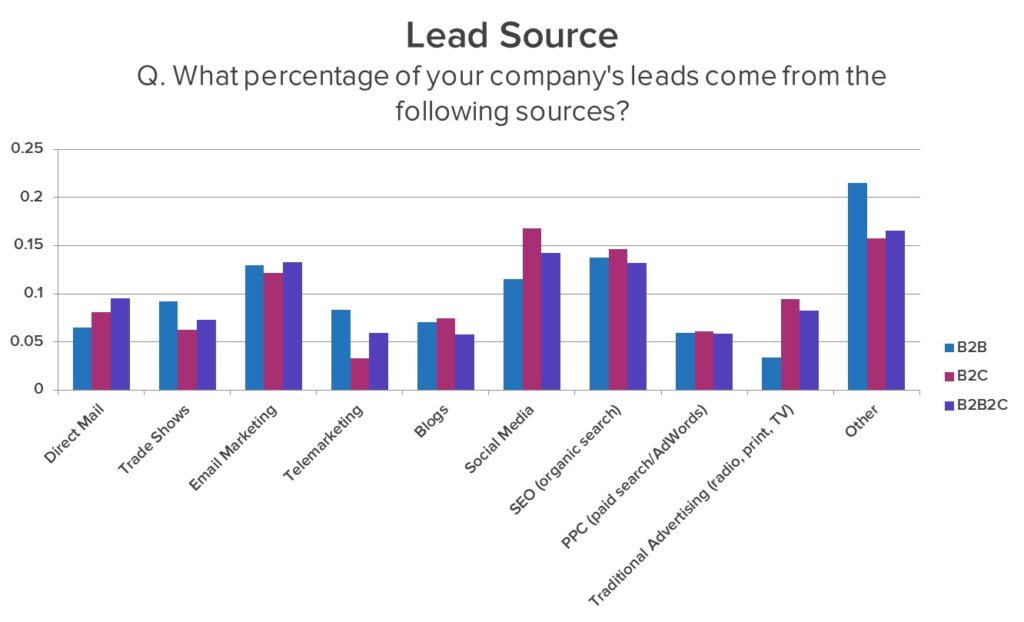
(Source: Prospectr Marketing)
- Optimizing conversion – or qualifying contacts – by applying suitable levers. Once a lead shows their interest, it’s time to turn words into action by collecting information that will allow you to contact them again and engage them down the conversion funnel. That’s where CTAs come in, along with landing pages, forms, email marketing, polls, ad retargeting, software demos, “lead magnets” (premium content that users can download in exchange for filling in a form), etc. This data helps you assess the degree of interest each contact is showing from a lead scoring perspective – each lead will receive a numeric value based on their maturity, until they are ready to be directed to a salesperson.
- Analyzing and optimizing the performance of your lead generation strategy. This step is absolutely crucial because it allows you to measure the effectiveness of your actions and to assess the “quality” of the leads it allowed you to generate. Your lead generation campaign doesn’t seem to be achieving much? The results are disappointing? A rigorous analysis of the various phases involved in the process will allow you to identify sticking points and to circumvent any roadblocks to improve your performance significantly.
Lead generation is an extremely powerful marketing strategy, which attracts the attention of contacts who are genuinely interested in what you have to offer. It also encourages them to materialize their interest by providing you with their contact details (through a lead generation website, for instance), helping you to qualify them. So long as you activate the right levers!









